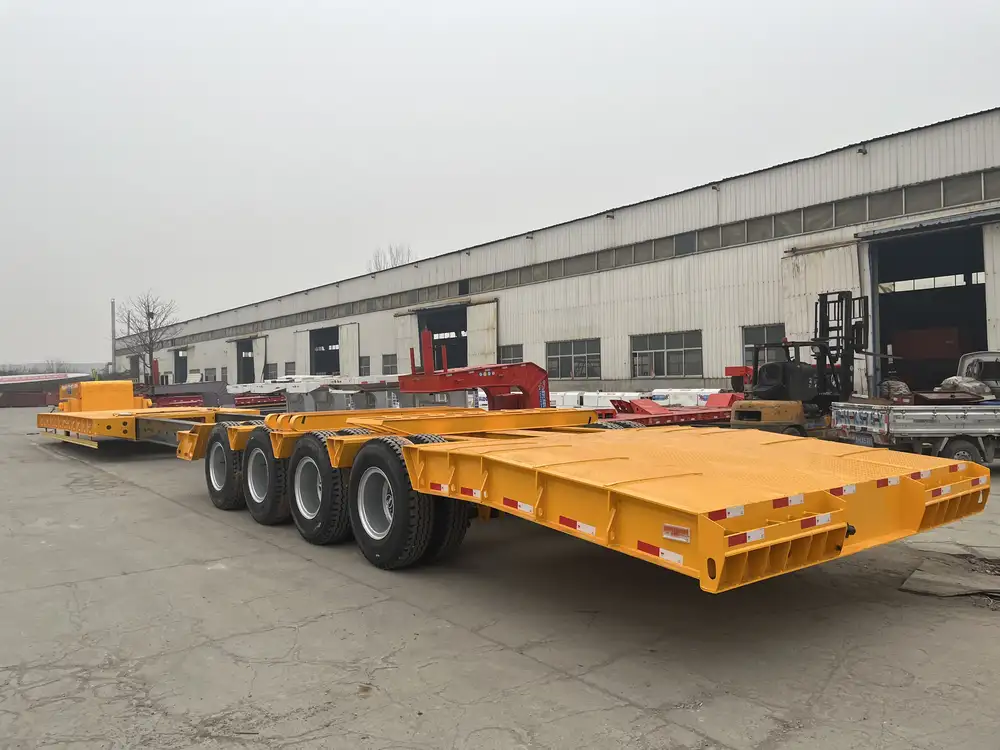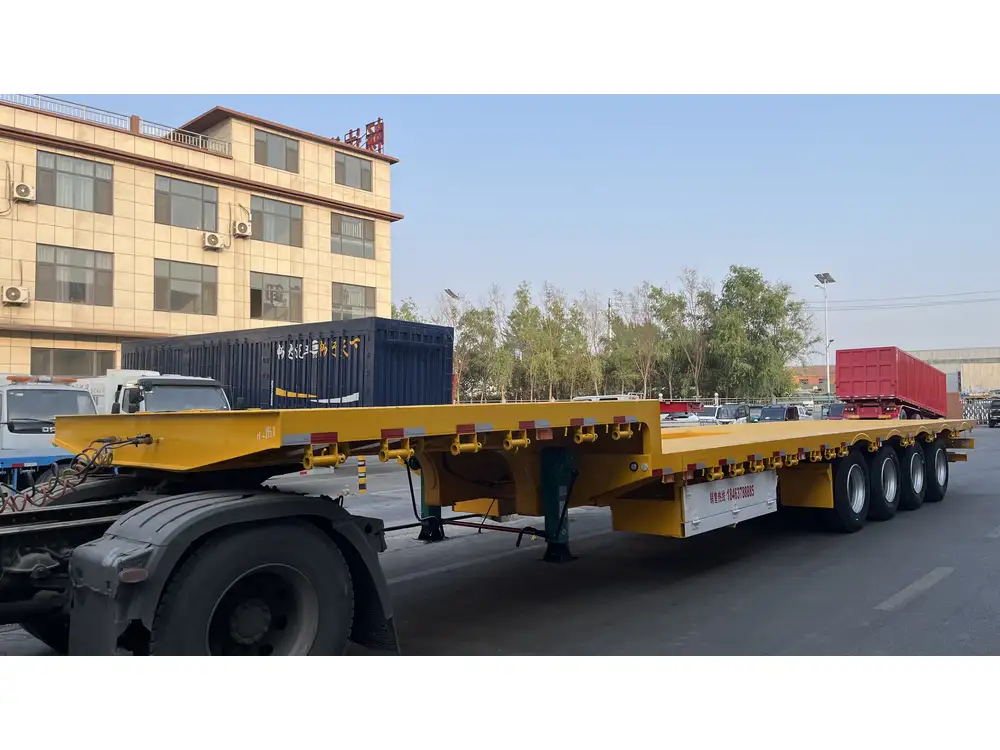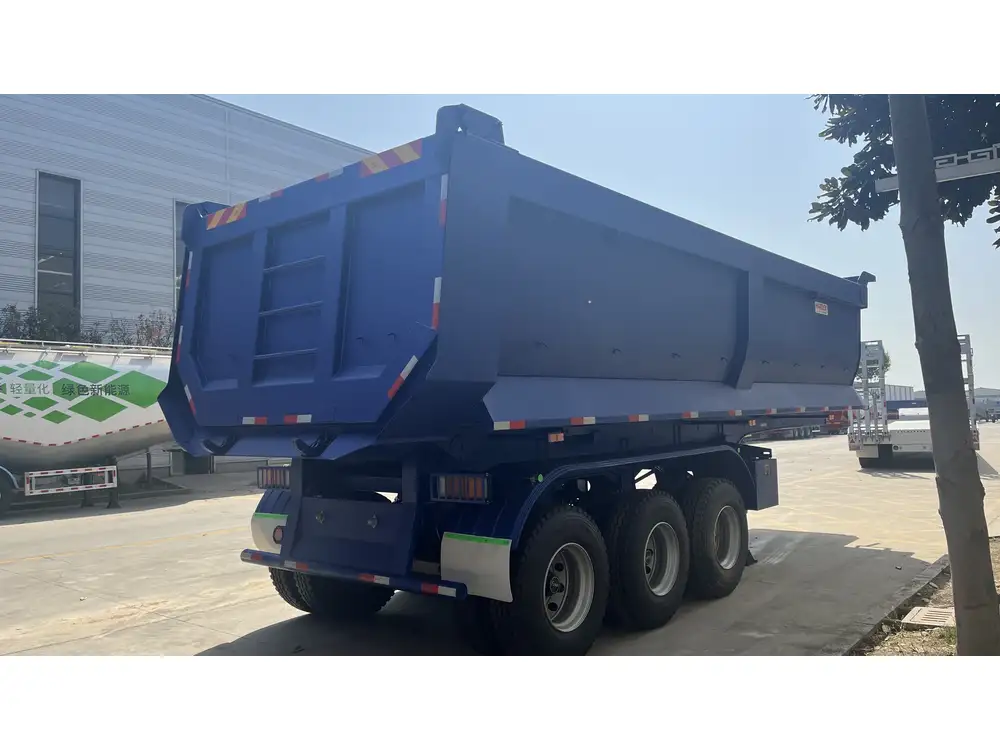When it comes to selecting the perfect dump trailer for your 2000 Ford F250 with a 7.3-liter engine, the decision can significantly impact your hauling efficiency and overall experience. This guide delves into the various aspects that need consideration to make an informed choice that enhances your vehicle’s capabilities while ensuring safety and compliance.
Understanding Your 2000 Ford F250 7.3 Specifications
Before diving into dump trailer specifics, it’s essential to comprehend the capabilities of your truck. The 2000 Ford F250 is renowned for its robust performance and towing prowess. Key specifications to note include:
| Specification | Details |
|---|---|
| Engine Type | 7.3L V8 Turbo Diesel |
| Horsepower | 250 HP |
| Torque | 525 lb-ft |
| Maximum Payload | Approx. 3,900 lbs (varying by configuration) |
| Maximum Towing Capacity | Up to 12,500 lbs |
With these specs in mind, we can approach the selection of a dump trailer that matches your vehicle’s capabilities and your specific project needs.
Determining Suitable Dump Trailer Sizes
The size of the dump trailer you choose must complement the towing capacity of your F250 to avoid strain on both the trailer and the truck. Here’s a breakdown of the common dump trailer sizes and their suitability:

Small Dump Trailers (5 to 7 Cubic Yards)
- Capacity: 1,000 to 3,000 lbs
- Ideal For: Light tasks such as landscaping, small construction jobs, and residential clean-ups.
- Features:
- Easier to maneuver in tight spaces.
- Less weight translates to better fuel efficiency.
Medium Dump Trailers (8 to 12 Cubic Yards)
- Capacity: 3,000 to 7,000 lbs
- Ideal For: Mid-sized tasks including heavy-duty landscaping, minor renovations, and larger residential projects.
- Features:
- A balance between payload capacity and versatility.
- Adequate for hauling aggregate materials and debris.
Large Dump Trailers (14 to 16 Cubic Yards)
- Capacity: 7,000 to 12,000 lbs
- Ideal For: Major construction, demolition projects, and commercial applications.
- Features:
- Requires a robust towing vehicle; ideally paired with larger trucks.
- Great for transporting more substantial loads in fewer trips.

Legal Considerations and Weight Ratings
When selecting a dump trailer, ensuring you’re within legal limits is crucial. The Federal Highway Administration regulates weight limits, which can vary by state.
- Gross Vehicle Weight Rating (GVWR): The combined weight of the truck and trailer should not exceed the manufacturer’s rating. For a 2000 Ford F250, the GVWR typically hovers around 8,800 lbs.
- Trailer Weight: Subtract the weight of your vehicle and any loaded materials from the GVWR to determine the maximum allowable trailer weight.
Example Calculation:
If your F250 is 5,000 lbs and you have a payload of 2,000 lbs:
- Total Vehicle Weight: 5,000 + 2,000 = 7,000 lbs
- Remaining GVWR: 8,800 – 7,000 = 1,800 lbs available for trailer weight.
This means that when fully loaded, your trailer should weigh no more than 1,800 lbs, impacting the size of dump trailer you may choose.
Dump Trailer Construction Materials
An essential component of determining the right dump trailer lies in understanding the various construction materials available.
| Material | Advantages | Disadvantages |
|---|---|---|
| Steel | Highly durable, capable of heavy loads | Heavier, can rust over time |
| Aluminum | Lightweight, corrosion-resistant | Less strength compared to steel |
| Composite Materials | Resistant to rust and weathering | May be more expensive, limited sizes |

Recommendations:
For most users seeking reliability with weight in mind, a steel dump trailer in the medium size range is typically ideal.
Features to Consider in a Dump Trailer
1. Dump Mechanism
Types of Dump Mechanisms:
- Scissor Lift: Offers greater lifting power, enabling hauling heavier loads.
- Single Ram: More common in lighter models; easier on maintenance.

2. Bed Size and Design
Choosing a design that matches your hauling needs:
- Standard Rectangular: Provides maximum volume.
- V-nose Designs: Useful for specific hauling tasks, offering more flexibility.
3. Axle Configuration
- Single Axle: Best for lighter loads, easier maneuverability.
- Dual or Triple Axle: Necessary for heavier capacities and more stability.
4. Braking Systems
A critical aspect of ensuring safety while towing:
- Electric Brakes: Easier to maintain and often more reliable.
- Surge Brakes: Provide automatic braking, helpful for novice towers.

Safety and Towing Guidance
Safety should always be a priority when towing a dump trailer. Here are key practices to adopt:
- Regular Maintenance: Inspect both the truck and trailer before each trip.
- Tire Ratings: Ensure tires are rated for the weight they will be carrying.
- Weight Distribution: Properly distribute the load within the trailer for balanced towing.
- Use of Weight Distribution Hitches: Helps in stabilizing the trailer during transport.
Making Your Decision
Selecting the right size dump trailer involves careful evaluation of your needs, vehicle capabilities, and intended use cases. Here’s a quick guide to help you decide effectively:
Quick Reference Decision Table
| Intended Use | Recommended Size | Max Load Capacity |
|---|---|---|
| Light Landscaping | 5-7 Cubic Yards | 1,000-3,000 lbs |
| Medium Renovations | 8-12 Cubic Yards | 3,000-7,000 lbs |
| Heavy Construction | 14-16 Cubic Yards | 7,000-12,000 lbs |

Conclusion
Selecting the appropriate dump trailer for your 2000 Ford F250 7.3 entails understanding your vehicle’s capabilities, considering load requirements, and assessing safety measures. By closely examining the various types of trailers and their specifications, you can enhance your efficiency, safety, and overall towing experience. With robust planning and smart choice-making, your dump trailer journey will lead to successful hauling and peace of mind on every job site.
Investing in the right dump trailer not only amplifies your capabilities but ensures that your projects are completed efficiently, safely, and within legal parameters. Whether tackling landscaping, renovating, or any heavy-duty haul, making an informed choice will always yield the best results.



